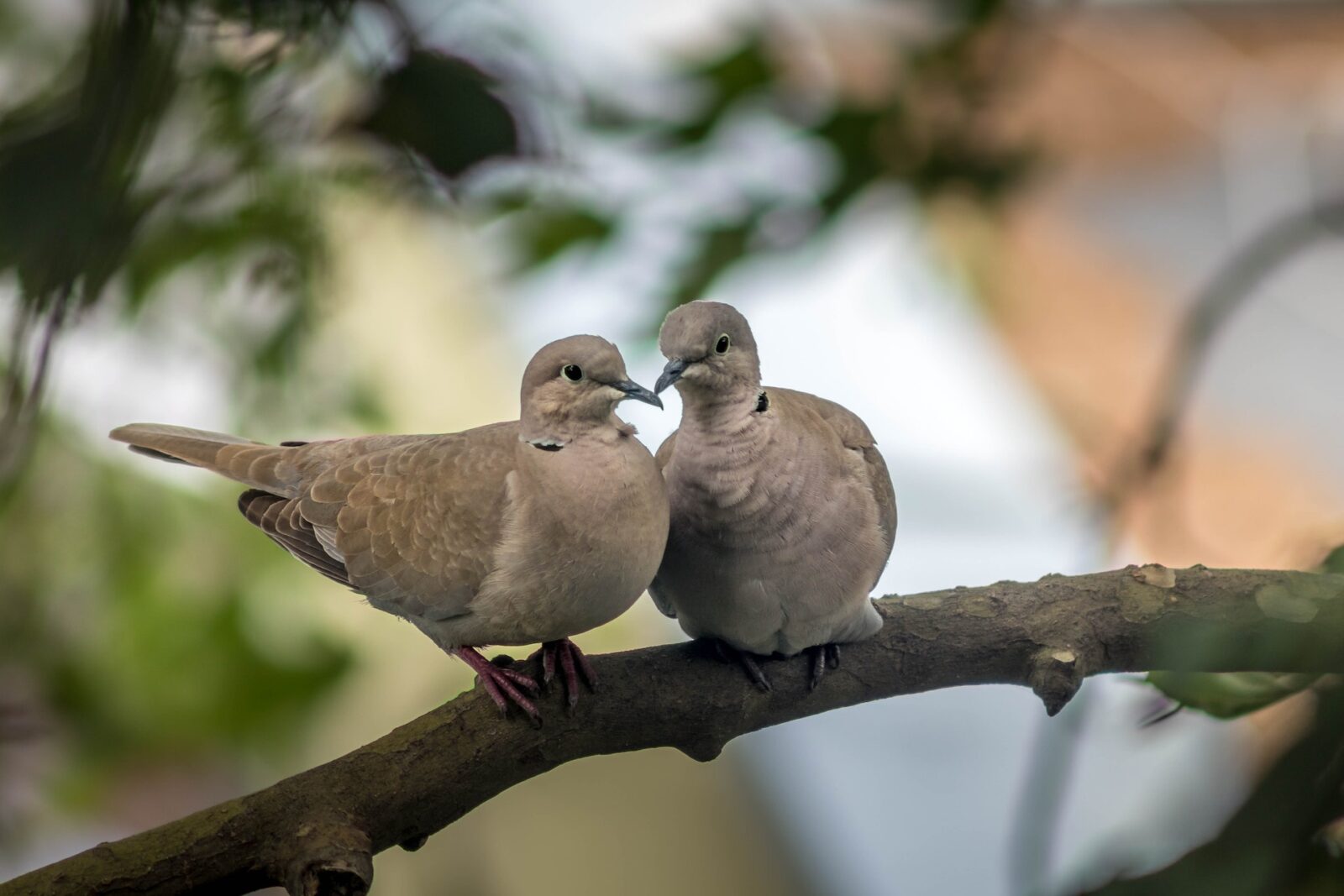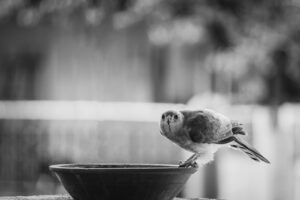
HAWKS & DOVES REVISITED
 A hawk was chasing a dove in our back yard and the dove flew into one of our big windows. The dove fell to the ground stunned and the hawk sat on the garden wall watching the dove. When we walked outside and saw this, having been alerted by the thud against the window, the hawk flew away to a nearby tree. I walked slowly to the dove, bent down to see the damage and the dove flew a short distance to the wall where the hawk had sat earlier.
A hawk was chasing a dove in our back yard and the dove flew into one of our big windows. The dove fell to the ground stunned and the hawk sat on the garden wall watching the dove. When we walked outside and saw this, having been alerted by the thud against the window, the hawk flew away to a nearby tree. I walked slowly to the dove, bent down to see the damage and the dove flew a short distance to the wall where the hawk had sat earlier.
The dove sat on the wall for 20 minutes or so, started moving its head slowly, took a few steps and flew down to the ground where there was some bird seed from a previous feeder. As soon as the dove hit the ground the hawk swooped in and the chase was on again, and as they flew out of my sight, I had a good idea of how it ended. Doves are a favored prey for hawks but hawks also eat bats, snakes, rats, mice and lizards, so on balance, it’s all part of an ecosystem and food chain that’s been at work for thousands of years. FYI, doves are granivores!
Hawks get eaten by owls, larger hawks, eagles, crows, ravens, racoons, porcupines and snakes.. However, it is almost always the young hawks or eggs these predators are after. Adult hawks actually have very few natural enemies. I have eaten dove meat but not hawk meat nor any of the other desert animals that may be a nuisance to some of us who tend our gardens.
We had a resident kangaroo rat recently that I trapped and removed. They are funny looking little creatures and can actually fight off some snakes with their small back legs. I see evidence of another one living under a big rock in the garden. To trap or not to trap, that’s the question.
The larger question this brings up is how do we participate in the Earth’s ecosystem upon which we depend for food, clean water, disease regulation, climate regulation, spiritual fulfillment, and aesthetic enjoyment? We impact the physical environment in many ways: overpopulation, pollution, burning fossil fuels, and deforestation. Changes like these have triggered climate change, soil erosion, poor air quality, and undrinkable water. Over 90% of our food comes from terrestrial ecosystems, which also provide energy, building materials, clothes, medicines, fresh and clean water, and clean air.
Our presence inevitably affects the ecosystems we are a part of, and we can either make choices that promote biodiversity, or devalue it. Some things we can do to help include recycling, eating a healthy and, when possible, a locally-based diet that is sustainably sourced, consuming only what we need, and limiting energy usage through efficient heating and cooling systems. We must be respectful toward wildlife, and help conserve and protect open spaces including rivers, lakes, ponds and natural plant life. Well-managed and protected areas support healthy ecosystems, which in turn keep people healthy. It is critical to get local communities involved in the development and management of these protected areas.
As a postscript, I remember hawks and doves from 55 years ago with regard to Viet Nam and regardless what you believed then or now, I’m glad we are out of the 20 year war in Afghanistan. A year after U.S. ground troops arrived in South Vietnam to help that country fight off the communist North Vietnamese, Gallup interviewers explained to Americans in a nationwide poll that “hawks” were people who wanted to step up the fighting in Vietnam, and “doves” were people who wanted to slow it down. Check out the time chart in the following article and see how public opinion changed, almost reversed, from 1965-1973. I wonder why it takes so long for some people to change their minds and come around. https://news.gallup.com/vault/191828/gallup-vault-hawks-doves-vietnam.aspx
